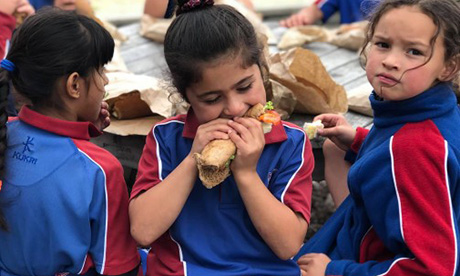When my son was at intermediate school, he would often ask for two or three extra sandwiches. I didn’t think much of it: ‘He’s a hungry, growing boy,’ was probably the first thing that came to mind. But I never said no.
It wasn’t until several months and dozens of ham, egg and mayo sandwiches later, I found out – by chance – that he had been feeding a schoolmate, too.
My initial reaction was annoyance. But after talking with my son, who was perplexed by my reaction, I soon humbled myself.
“We have extra bread, and you didn’t mind making the sandwiches when you thought they were for me, so what’s the problem?”, was my 11-year-old’s answer to, “Why didn’t you tell me the sandwiches were for your friend?”.
I felt sheepish at the way I had acted. My son saw that his friend was hungry, so found a solution. Fixed.
But if only it were that easy to fix poverty.
A Salvation Army Report released earlier this year laid the numbers bare: Pasifika and Māori children still experience poverty rates two to three times higher than Asian and European children. And one in five children in decile one areas left school without NCEA Level 1.
The number of households relying on welfare benefits has increased, and children in these families are the most likely to live in poverty.
Although government financial assistance has increased, the continued pandemic and rising living costs contribute to increasing uncertainty around lifting the most vulnerable children out of poverty.
Also worryingly, the number of children identified as victims of abuse, including sexual abuse, has increased. Covid-19 has contributed to disruptions in children’s education, while disparities in educational outcomes have worsened between Māori and non-Māori.
Why are we not more outraged as a country? Maybe we are, or maybe it’s fatigue?
We need to stop harping on
about how child poverty
is someone else’s problem,
let’s take the burden off some families
and pitch in and help.
The Government’s free lunches pilot in lower decile schools has solved the dilemma of many children going to school and being hungry, but what about dinner time, and weekends? And what about all the other disadvantages of growing up in poverty, like not being able to play sports, or afford shoes, or attend school?
Budget 2022 will give a $350 cost of living payment to those earning less than $70,001, but people who receive the winter energy payment, such as those on sole parent support, the jobseeker benefit, veterans and people getting NZ Superannuation, are not entitled to the cost of living payment.
Finance Minister Grant Robertson said the Government had already provided increases for those on income support.
“Since coming into Government, the changes mean that 364,000 people who receive income support are better off by an average of $109 per week. For those with children, they are better off by an average of $175 per week,” Robertson said.
I grew up in a small forestry town. We were poor, but I didn’t know I was poor. How can that be, you ask?
Well, simply put, everyone around me was poor. We had everything we needed: kai, a warm home, but there was no money for extras like shoes and new clothes. We didn’t have a car, so I walked everywhere or borrowed a horse from the back paddock to get to school.
I was raised in an era where cellphones were only used for texting, calling, and playing Snake. Social media was still a relatively new thing, and I spent weekends and after school swimming in the river and building huts in trees. We fished for our dinners and traded wild boar for milk and butter.
It’s a different time nowadays. Continue reading
- Donna-Lee Biddle is a is an investigator with the Criminal Cases Review Commission. A former journalist at the Waikato Times, she has a Bachelor of Media Arts (Communication), Journalism pathway & National Diploma in Journalism (Multi-Media), and has been awarded the Wintec Adult Learner Award 2014 and the Bruce Jesson Merit Award 2014 (investigative journalism).
News category: Analysis and Comment.




